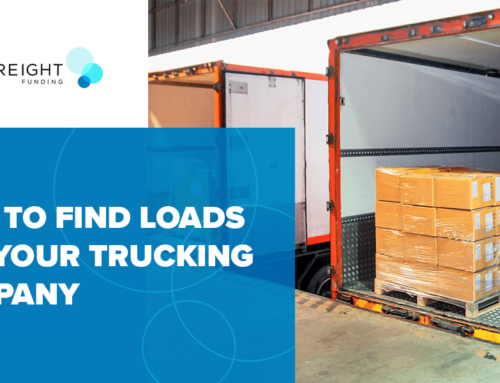As trucking businesses plan out their year, logistics and supply chain demands significantly impact their revenue streams and bottom lines. Smaller and medium-sized companies are especially affected by their decisions to take part in the spot freight market or negotiate agreements for longer-term contract rates.
While both options have pros and cons, it’s essential to understand what these models are, how they work, what factors impact them, and why your company should choose one over the other.
What Are Contract Rates in Shipping?
A contract rate, or a primary rate, is a long-term agreement locking in prices and shipping volumes for shippers and providers. Through the annual bidding process known as a Request for Proposal (RFP), a business offers its predicted shipping volume to a network of carriers, and interested drivers will respond with their shipping estimate. The prior three to six months of the spot freight market heavily influence pricing estimates and market fluctuations, determined by costs such as:
- Line-haul rates: These are the costs associated with freight transportation across a particular route. These costs change based on various factors, like supply and demand, weather, length of the haul, and shipping dates.
- Accessorial rates: These include any extra fees with the potential to increase the shipment cost. Some examples of these additional costs include stop charges, detention, fuel surcharge rate, and excess cargo insurance.
How Long Does a Contact Rate Last?
These contracts are set for a certain length of time, based on the needs of the business. They can range anywhere from monthly to yearly contracts. Most of these agreements do not extend past a year to meet the demands of an ever-changing shipping market.
Some contracts also include periods when shippers and carriers can renegotiate the length and price of shipment once providers have a better understanding of the risk and costs involved.
Why Choose Contract Rates?
The shipping industry is large and massively volatile, full of carriers and businesses looking to achieve their business goals. With these goals in mind, each entity strives to find the best fit for its needs. Competition and fluctuation create a severely unpredictable environment, with shifts in prices, supply and demand, and necessary capacity. Contract rates are often seen as the solution to this unpredictability for carriers and businesses, offering the unique benefits of a stable agreement.
Contract rates eliminate carriers’ need to wonder where their next freight shipments will come from. With their guaranteed shipping lane, providers have a secure and more consistent day-to-day shipping schedule that offers a reliable revenue stream. These assurances are likely to increase driver satisfaction and allow companies to develop deeper relationships with their drivers.
Cultivated relationships and predictable costs allow companies to ease their administrative headaches and better manage their budgets. The longer a company works with a dedicated shipment carrier, the more the carrier will understand its needs and procedures, leading to overall better service.
Contract rates also enable companies to easily forecast the future, meeting budgetary demands and customers’ needs throughout the year. However, companies with irregular shipment schedules, uncertain routes or fluctuating volume capacities may benefit from trucking spot rates over contract rates.

What Are Spot Rates?
Companies often turn to spot rates to get the job done, whether they need to send out a shipment on short notice or their current carriers cannot handle their volume. Spot rates are short-term contracts that reflect real-time market pricing for a single shipment from point A to point B. Spot rate pricing can be intensely competitive as prices fluctuate due to real-time conditions and freight carriers’ fight for shipments.
What Influences Spot Rates?
Supply and demand play a significant role in determining the spot prices companies can expect to pay. As the demand for trucks increases and availability decreases, companies can expect to pay more. As the need for trucks decreases and the availability increases, prices will begin to drop. They are often difficult to predict, potentially changing on an hourly basis.
Spot rates in the trucking market are dynamic and challenging to predict — therefore, budget planning and forecasting become more complex as well. They also require frequent and repetitive negotiation with carriers taking time out of a business schedule. These relationships between carriers and businesses prove to be primarily transactional. An agreement such as this often lacks trust, security, and accountability.
Why Do Businesses Use Spot Rates?
For most businesses, contract rates are the go-to strategy for offering stable, consistent, and trustworthy shipment solutions. However, with a frequently changing shipping industry, companies may need to blend both models to adapt to and meet the demands of their markets.
Spot rates are the go-to solution when serious commitments or consistent shipping volumes are not achievable. They’re ideal for helping businesses find transportation solutions on short notice and enabling enterprises to agree to full-load or less-than-truck load capacities, quickly moving the required freight volume.
Many businesses view spot rates as unsuitable for consistent shipping solutions, primarily using them only in emergencies. Some common circumstances that may call for companies to use spot rates include:
- Unexpected or one-time shipments
- An inadequate volume of carriers in the shipping lane to secure contract rate
- Irregular or insufficient shipping volumes
Which Rate Is Better for My Trucking Business?
When it’s time to find the best price and choose between spot and contract rates, consider which rate is more cost-effective for your business. A spot rate can be higher or lower than contract rates at any time, as spot rates depend entirely on real-time market conditions like supply and demand.
Two common market types that affect these rates include:
- Tight markets: At times, there are not enough carriers to meet shippers’ demands. When this happens, carriers are more likely to reject contract bids to accept higher prices on the spot rate market. Also known as a carrier’s market, these situations drive contract rates down, making them less profitable than a trucking spot rate.
- Soft markets: Other times, shipping capacity is abundant without a high volume of shipments. In these circumstances, trucking companies compete with one another and drive their spot rates down to attract potential shippers. These spot rate costs tend to fall lower than contract rates, and long-term contract rates become preferable for carriers.
Ask yourself a few questions to help you determine which strategy is right for your operations:
- When is your busy season?
- Can your business handle fluctuations in prices?
- Do you value having a steady stream of shipments?
- Do you benefit from one-off shipments?
Your answer to these questions should lead you to decide whether contract rates or spot rates — or a combination of both — are better for your company.
Access Your Capital in No Time With Porter Freight Funding
Porter Freight Funding makes it possible to get your hands on your hard-earned money without enduring standard 30-, 60- or 90-day waiting periods. Deliver loads as usual and send our experts the proper documentation. Once we process it on our end, we’ll send your funds straight to your bank account or fuel card, based on your factoring plan.
Whether you use spot or contract rates, Porter Freight Funding will give you the benefit of financial certainty with the help of fast and secure payments. Ready to get started? Contact one of our representatives for more information, or fill out an application today!



